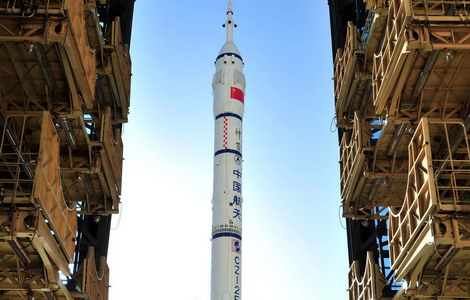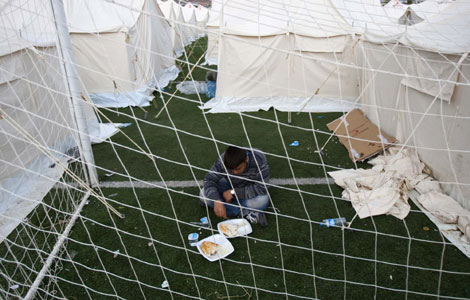Shifting from labor-intensive to tech-intensive
Updated: 2011-10-27 08:06
By Xu Xiao and Liu Xiang (China Daily)
|
|||||||||||
|
A restored section of the Jinshanling Great Wall in Heibei province. |
Hebei province plans to increase per capita incomes of urbanites and farmers over the next five years which are considered a key period for improving the province overall.
It is giving priority to industrialization, urbanization and agricultural modernization as part of the provincial 12th Five-Year Plan (2011-2015).
Hebei is a neighbor of the cities of Beijing and Tianjin and an important part of what is referred to as the "capital economic circle".
This area will be built into an environmentally friendly industrial zone and a vocation developing place with a picturesque landscape, centered on Beijing.
To increase economic exchanges, the provincial government wants to improve its transportation system to cut travel times to Beijing.
The plan is to expand the province's railway network and have highways connecting all cities, towns, districts, major economic zones, and tourist sites, by the end of 2015.
The aviation industry is also expected to grow, with Hebei Airlines and the Shijiazhuang Airport in the lead. Aviation is expected to be able to handle 200 million passengers annually and more than 200 million tons of cargo, by the end of 2015.
The ports at Qinhuangdao, Tangshan and Huanghua are being expanded and the province estimates that it will handle 800 million tons of cargo annually by the end of 2015.
The development plan calls for local authorities to push scientific development and shift the economic development model from labor intensive to technology intensive in the five-year period.
This will allow the province to address its environmental issues and lack of innovation, local officials say, and it is expected to create more job opportunities, increase incomes, and build a more secure society.
The plan calls for urbanites' incomes to be more than 24,300 yuan ($ 3,747) annually, on average, and farmers', more than 8,200 yuan.
Hebei is looking to get a total of 500 billion yuan in investment, and to utilize at least 64 billion yuan in foreign capital, by the end of 2015.
Authorities want to do more to develop the central and southern parts of the province and build more manufacturing bases, modern service centers, modern agricultural areas, and cultural tourism sites.
They are also planning several major industrial parks, to serve more than 80 percent of the province's new projects. Every city will build three to four such parks around the downtown area and every town will have one or two of them nearby.
There are more than 10,000 housing projects in the planning stage, to be completed by the end of 2015, because the modernization of rural areas is an important part of the Five-Year Plan.
Unemployment has been a major concern for some time and authorities say they will create more jobs and try their best to hold the unemployment rate to below 4.5 percent.
Social security is another area that needs to expand access, so that around 90 percent of urbanites will be covered by medical insurance, and 12.8 million urbanites, and 25.7 million rural people, will fall under an expanded pension system.
Those families with an average housing area of less than 15 square meters per person will qualify for government aid.
(China Daily 10/27/2011 page6)
Hot Topics
Libya conflict, Gaddafi, Oil spill, Palace Museum scandal, Inflation, Japan's new PM, Trapped miners, Mooncake tax, Weekly photos, Hurricane Irene
Editor's Picks

|

|

|

|

|

|








